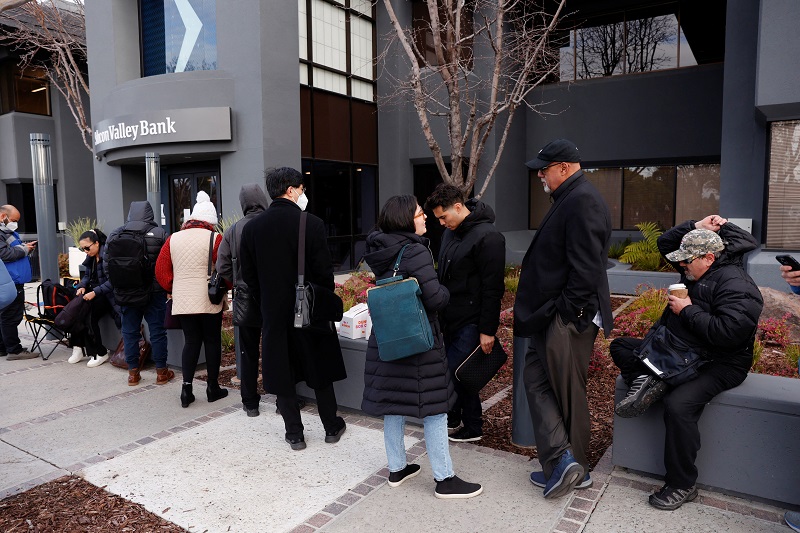
By Dongpil Kim
The author is chief editorial writer of The Korea Daily.
Dominic Ng, chairman and CEO of East West Bank, the largest Chinese American listed bank in the United States, found himself under scrutiny during an investor conference call in April. Despite a 35.7% surge in first-quarter profits compared to the same period last year, he faced a barrage of questions from investors regarding commercial real estate loans and deposits.
Concerns about the future business environment dominated the discussion, with inquiries such as, “The commercial real estate market is stagnant, do you have any plans to refinance?” and “Do you think you have enough deposits?” The sentiment was mirrored among Korean American community banks, as their executives devoted a significant portion of their investor conference calls, following the announcement of first-quarter earnings, to elaborate on their commercial real estate measures and plans for securing deposits. The objective was to reassure investors.
Banks, particularly community banks like Korean American banks, are currently grappling with a double whammy. The decline in the commercial real estate market and the increasing cost of deposits are major factors contributing to the challenge. The issue of refinancing commercial real estate loans has been particularly worrisome. As vacancy rates have risen since the pandemic, the value of office, retail, and warehouse buildings has declined, leading to an increase in refinancing demands and exerting pressure on banks.
According to a financial intelligence firm, approximately $1.5 trillion in commercial real estate loans will need to be refinanced within the next three years. The problem lies in the fact that 70% of these loans are held by community banks. Even Treasury Secretary Janet Yellen has expressed concern, stating, “There’s a high likelihood that we’re going to see small banks close as the commercial real estate market slows.”

In the first quarter of this year, average deposit interest rates at community banks increased by 0.39 percentage points from the previous quarter, according to the Federal Deposit Insurance Corporation (FDIC), while loan interest rates only increased by an average of 0.16 percentage points. These shrinking deposit margins directly translate to lower profits for banks, particularly community banks, where interest earnings constitute a significant portion of total revenue. As a result, analysts hold a pessimistic view on the earnings outlook for community banks.
Unsurprisingly, this sentiment is reflected in stock prices. While most bank stocks have experienced significant declines since the SVB crisis, Korean American community banks have been hit even harder and have been slower to recover. For instance, Bank of Hope, which was previously traded above $14 before the SVB scandal, is currently trading sideways in the $8 range. Similarly, Hanmi, which previously traded at $23 per share, is now hovering around $15, PCB has fallen from $18 to $14, and Open Bank has declined from $11 to $8. Leading Chinese American banks, East West and Cathay, have also witnessed similar trends. East West, previously trading around $72 just before the SVB crisis, is now down to $52, while Cathay has slipped from $42 to $31.
In general, higher benchmark rates are advantageous for bank earnings, as the increase is immediately reflected in lending rates but staggered in deposit rates. However, financial experts suggest that the recent sharp increase in the benchmark rate is having a negative impact on community banks’ earnings.
Korean American banks posted record profits last year, with six community banks in Southern California alone reporting net earnings exceeding $450 million. While this was attributable to the hard work of the banks, it was also due to the thriving financial market. However, this year presents a different scenario. The nation’s 4,000 community banks are currently facing common challenges and struggling to find their own solutions. The capabilities of Korean American bank executives and boards are also being put to the test.




